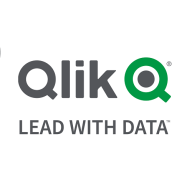

Qlik Analytics Platform and Splunk Cloud Platform are competing analytics solutions offering distinct advantages in the analytics space. While both excel in certain areas, Splunk Cloud seems to have an edge due to its robust real-time data processing capabilities.
Features: Qlik Analytics is known for its intuitive data discovery, advanced data visualization, and associative indexing. On the other hand, Splunk Cloud is recognized for its powerful search capabilities, machine-generated data analysis, and strong real-time operational intelligence.
Room for Improvement: Qlik Analytics could enhance its scalability and cloud integration options, focus on improving real-time data processing, and expand its data governance features. Splunk Cloud might enhance its user interface for ease of use, reduce the complexity of setup for smaller organizations, and optimize its cost structure to appeal to a wider range of businesses.
Ease of Deployment and Customer Service: Qlik Analytics provides a straightforward deployment process with comprehensive resources and support, making it accessible for users. Splunk Cloud, being cloud-based, facilitates rapid deployment with scalable infrastructure, and its extensive support services are highly beneficial, especially in complex environments.
Pricing and ROI: Qlik Analytics offers competitive pricing with strong ROI potential through effective data usage, ideal for organizations focused on business intelligence. Splunk Cloud, although having a higher pricing tier, justifies this through its advanced analytical capabilities and scalability, providing value in scenarios requiring extensive data handling and analysis.


Part of the Qlik Sense family of products, the Qlik Analytics Platform puts the power of the Qlik Associative Engine and visualizations in the hands of application and web developers through powerful, open and modern API’s, allowing you to see the whole story within your data.
Splunk Cloud Platform is widely used for log management, security monitoring, application performance monitoring, troubleshooting, data aggregation, and IT operations. It centralizes logs from numerous sources, enabling detailed analysis, incident detection, and effective dashboard creation.
Companies across various industries leverage Splunk Cloud Platform for cybersecurity, compliance, user activity monitoring, and alerts. It helps in managing cloud environments, optimizing data storage costs, and enhancing customer insights with effective data visualization. The platform's robust capabilities include customizable reporting, flexible log sending, powerful search features, and seamless integration with other systems. Users monitor multiple environments and platforms effortlessly with the cloud infrastructure maintained by Splunk. Despite its advantages, users find the pricing steep, support ineffective, and encounter performance issues with large data volumes. Integration challenges, limited training resources, and insufficient documentation also pose concerns.
What are the most important features of Splunk Cloud Platform?Splunk Cloud Platform is implemented across industries including finance, healthcare, retail, and technology. Organizations use it to enhance cybersecurity measures, meet compliance requirements, monitor user activities, and issue automated alerts. In finance, it assists in fraud detection and compliance. In healthcare, it ensures data security and regulatory adherence. Retailers use it for customer behavior analysis and performance monitoring, while technology companies benefit from its troubleshooting and log management capabilities. Despite its powerful features, companies face challenges with pricing, support, and integration that require consideration during implementation.
We monitor all Data Visualization reviews to prevent fraudulent reviews and keep review quality high. We do not post reviews by company employees or direct competitors. We validate each review for authenticity via cross-reference with LinkedIn, and personal follow-up with the reviewer when necessary.